It's no secret to Canadians that our country is home to one of the world's best places to view polar bears in their natural habitat — and getting there is pretty easy.
Churchill, Man. is just a short flight from Winnipeg and, depending on when you visit, there's a good chance you'll see plenty of these majestic mammals frolicking on the shores of Hudson Bay.
Advertisement
However, there are some things to consider before setting out on a polar bear expedition. We've compiled a list of things you need to know before you book your trip.
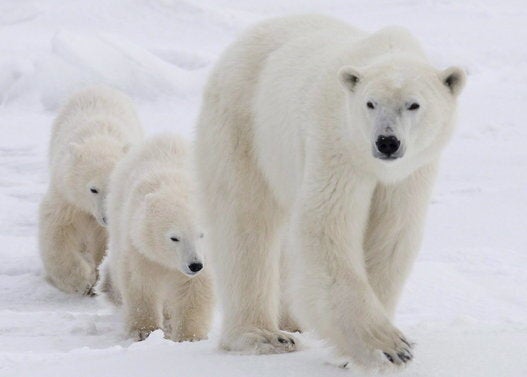
Jonathan Hayward/The Canadian Press
The Manitoba government estimates the number of polar bears in the western Hudson Bay area is somewhere between 900 and 1,000.
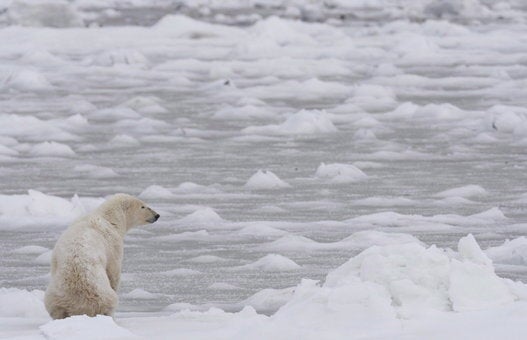
Jonathan Hayward/The Canadian Press
The majority of the bears spend most of the year — from mid-November to mid-July — hanging out on the sea ice of Hudson Bay.
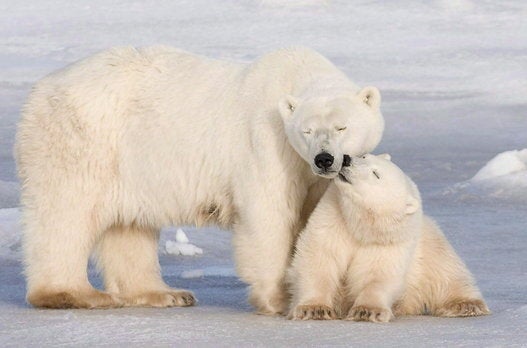
Jonathan Hayward/The Canadian Press
The exception is pregnant mother bears, who spend most of the winter hibernating in maternity dens, before emerging with their cubs in March and making their way to the sea.
Advertisement

Jonathan Hayward/The Canadian Press
Churchill, Man., a small town with a population of about 800, is the most popular destination in Canada for tourists to view the bears. Churchill is nicknamed "Polar Bear Capital of the World."

Sean Kilpatrick/The Canadian Press
According to EverythingChurchill.com, October and November make up prime polar bear viewing season in the town, as the bears move from their summer habitat on the tundra back to the shores of Hudson Bay, where the seal-hunting is good.

Paul Souders via Getty Images
So many tourists are eager to spot polar bears, that it's recommended you book your trip six months to a year ahead, to ensure you can find accommodation and a spot on a tour.
Advertisement
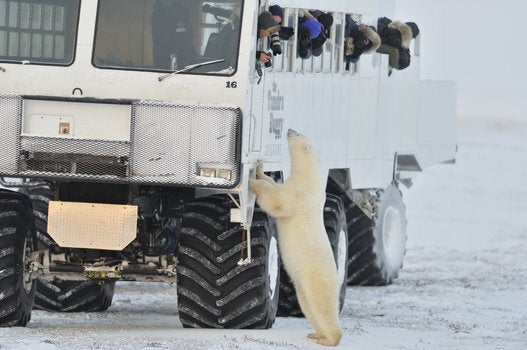
Don Johnston via Getty Images
Specially equipped tundra vehicles allow tourists to safely view the bears.
There are, however, limits on how many of these vehicles are allowed to operate. Manitoba Conservation restricts the number of tour operators and vehicles in prime polar bear viewing territory, to minimize the impact to the surrounding tundra.
There are, however, limits on how many of these vehicles are allowed to operate. Manitoba Conservation restricts the number of tour operators and vehicles in prime polar bear viewing territory, to minimize the impact to the surrounding tundra.

CORDIER Sylvain / hemis.fr via Getty Images
The polar bears may appear cuddly and cute — and even friendly. This couldn't be farther from the truth.
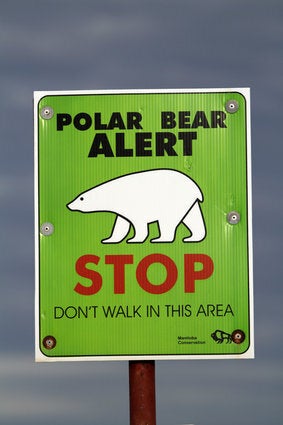
Will Gray via Getty Images
During your stay in Churchill, you may come across signs like this.
Every effort is made to keep people safe from polar bears, but sometimes the curious animals make their way very close to town.
Every effort is made to keep people safe from polar bears, but sometimes the curious animals make their way very close to town.
Advertisement

Tom Soucek via Getty Images
In 2012, Churchill locals told a Postmedia reporter that many residents leave their cars unlocked, in case someone needs to make a quick escape from a rogue bear.
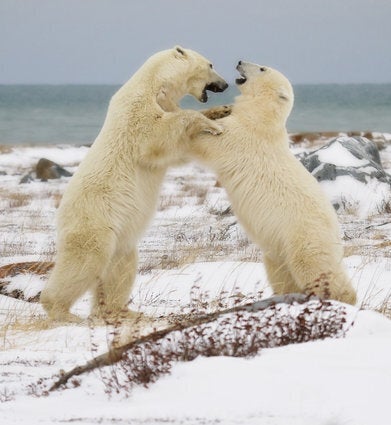
Lynn_Bystrom via Getty Images
In Churchill, male polar bears can grow to be heavier than 600 kilograms (1,320 lb.) and stand 3.05 metres (10 ft.) tall, according to EverythingChurchill.com.
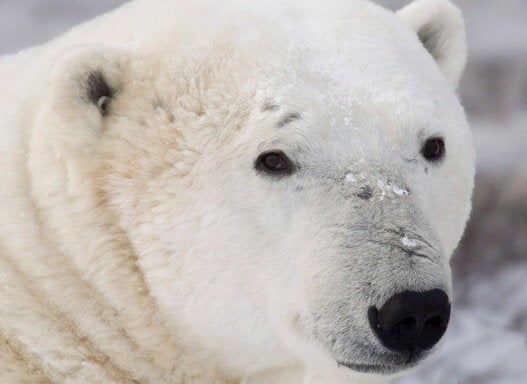
Jonathan Hayward/The Canadian Press
As well, polar bears are at the top of the food chain and have no natural enemies — meaning they also have no fear.
Advertisement

BLFink via Getty Images
In fact, the Manitoba government said last year that polar bear encounters with humans have reached record levels on the shores of Hudson Bay.
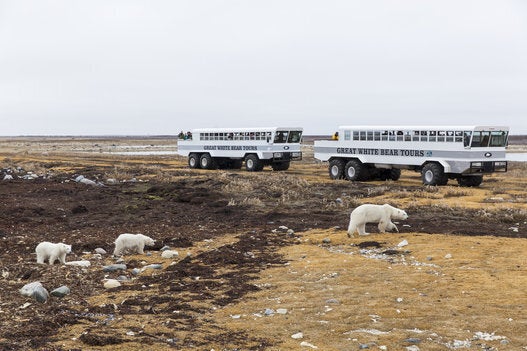
Paul Souders via Getty Images
Polar bear activity reports in recent years show the number of documented cases in Churchill has jumped from 229 in 2013 to 351 in 2015.

Barcroft via Getty Images
In Churchill, there is a holding facility for polar bears that come within the town's "control zone" — the populated area of town. It's part of the province's Polar Bear Alert Program.
Advertisement
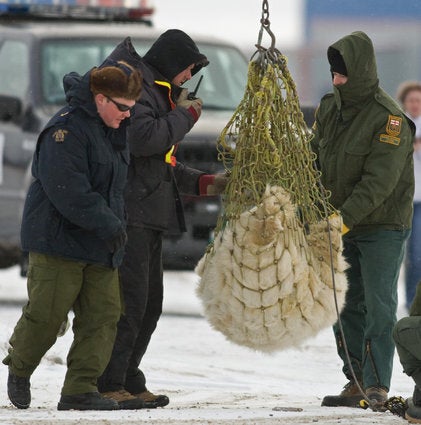
PAUL J. RICHARDS via Getty Images
The so-called "polar bear jail" aims to make a bear's stay very uncomfortable and not somewhere they wish to return. The bears are not fed and are not given any human contact, so as to not habituate them.
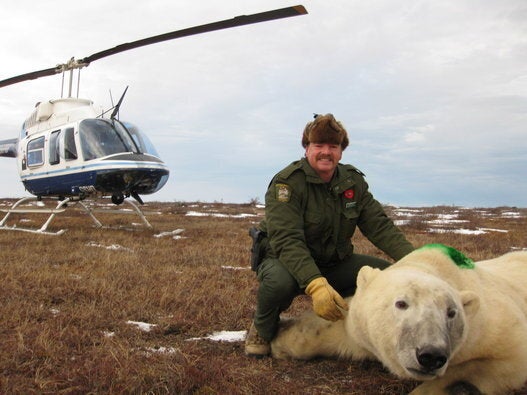
Barcroft via Getty Images
The number of bears who were tranquilized and housed in the jail before being released into the wild almost doubled from 36 in 2013 to 65 in 2015.
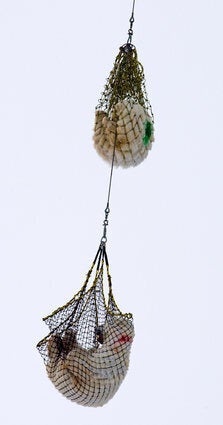
PAUL J. RICHARDS via Getty Images
Once their stay at the jail is complete, the "inmates" are eventually tranquilized and flown out onto the sea ice in a helicopter net, to return to hunting and eating.
Advertisement

Paul Souders via Getty Images
The Tyee reports the Polar Bear Alert program is arguably one of the most successful animal conservation programs in North American history.
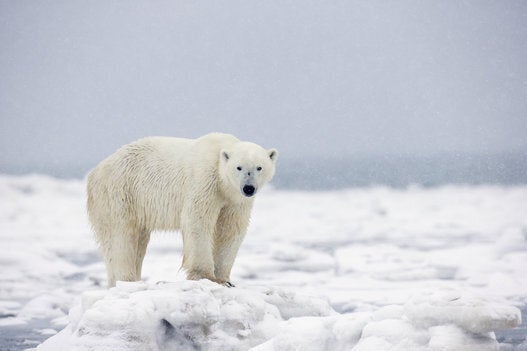
Robert Postma via Getty Images
Driven by scientists employed by universities and the Canadian government, and by local citizens who were tired of seeing as many as 29 polar bears being killed each year in the 1970s, the project was first intended to protect people and property. Since then, the welfare of the bears has become a priority as well.